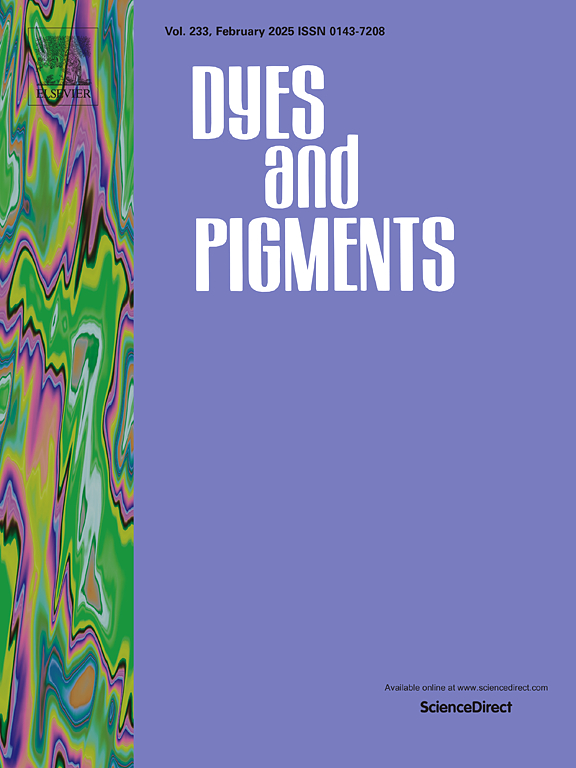Insight into structure-property relationship of diazo-based carbene-type dyes towards high fixing performance on synthetic fiber
IF 4.1
3区 工程技术
Q2 CHEMISTRY, APPLIED
引用次数: 0
Abstract
This paper investigated the reaction performance of diazo based carbene dyes with synthetic fibers, particularly the substituent effect of reactive group on fixation property of dyed fibers. Thus, a series of six azo dyes containing one diazo ester group were designed and synthesized. Their structures, absorption and thermal properties were firstly characterized. Four typical synthetic fibers, including polyurethane (PU), polyamide (PA), polyethylene terephthalate (PET), and polypropylene (PP) fibers, were dyed using the diazo type dyes in organic solvent followed by fixing the dyed fibers under high temperature. Substituent at α-position to diazo group was found to significantly affect the thermal stability of dye molecules and chemical reactivity of dyes with fibers. In donor-acceptor system, electron-withdrawing group on phenyl substituent increased the thermal stability of diazo moiety, and also largely improved the reactivity of dyes with various types of fibers. As comparison, diazo dyes having acceptor-acceptor system exhibited high thermal stability and needed more energy to initiate the reaction. However, these dyes, once initiated, presented higher reactivity with fibers, especially with PET fiber. The reaction mechanisms between dyes and synthetic fibers were reasonably speculated through small molecule simulation reactions and theoretical calculations, combined with the dye fixation results on fibers. All the aliphatic C–H or N–H bonds, as well as aromatic structures existed in fibers were possible sites for carbene reactions. These reactions included at least insertion reaction, addition reaction, and Wolff rearrangement reaction. N–H bond insertion reaction underwent much more easily than C–H bond insertion reaction, while addition reaction with phenyl group appeared the most difficult. Besides, carbonyl group lied in α-position to diazo group would induce a Wolff rearrangement reaction, which was also an efficient pathway for combining dyes with fibers containing N–H bonds.
求助全文
约1分钟内获得全文
求助全文
来源期刊

Dyes and Pigments
工程技术-材料科学:纺织
CiteScore
8.20
自引率
13.30%
发文量
933
审稿时长
33 days
期刊介绍:
Dyes and Pigments covers the scientific and technical aspects of the chemistry and physics of dyes, pigments and their intermediates. Emphasis is placed on the properties of the colouring matters themselves rather than on their applications or the system in which they may be applied.
Thus the journal accepts research and review papers on the synthesis of dyes, pigments and intermediates, their physical or chemical properties, e.g. spectroscopic, surface, solution or solid state characteristics, the physical aspects of their preparation, e.g. precipitation, nucleation and growth, crystal formation, liquid crystalline characteristics, their photochemical, ecological or biological properties and the relationship between colour and chemical constitution. However, papers are considered which deal with the more fundamental aspects of colourant application and of the interactions of colourants with substrates or media.
The journal will interest a wide variety of workers in a range of disciplines whose work involves dyes, pigments and their intermediates, and provides a platform for investigators with common interests but diverse fields of activity such as cosmetics, reprographics, dye and pigment synthesis, medical research, polymers, etc.
 求助内容:
求助内容: 应助结果提醒方式:
应助结果提醒方式:


